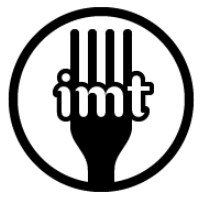Back in March of this year, the approach that Dina Hirsch, PhD, and I created for the treatment of eating disorders was renamed Integrative Modalities Therapy (IMT)! Here I'll explain the reason for the change as well as the meaning of the new name.
When we started out, our aim was to create a comprehensive collection of evidence-based interventions for patients and families with eating disorders. For the original plan, we knew that we needed to have an approachable patient-and-family-facing name. We decided to call the first version of our book "BITE," or Behavioral Interventions, Tips, and Evaluations. At the time, this name was fitting since the acronym represented the smallest behavioral step a person can take towards recovery (i.e. taking a bite of food) and the fully spelled-out name descriptively explained what was included in the book. It was a go!
Over the years, however, our singular book that brought together interventions, tips, and assessments grew into something much larger: an evidence-based practice treatment approach. We soon needed to write a treatment manual for clinicians to use alongside the original book for patients and families. Our unpublished manuscript became a resource for clinicians in the trenches who needed a summary of all of the varied evidence-based interventions in one easy place. Some have called our approach "evidence-based practice in a box." Recognizing the potential of this type of resource, our goal became to provide clinicians with a comprehensive, practical, flexible, and scalable resource to help navigate the treatment of eating disorders.
Considering these advancements, prior to both books being published by New Harbinger, it was time for a new clinician-facing name! We chose to rename our approach Integrative Modalities Therapy (IMT) because it integrates a wide array of evidence-based interventions from gold-standard treatments into the three modalities of individual, group, and family therapy. In short, the approach is both integrative and can be administered modularly across the three treatment modalities. As a clinician-facing evidence-based practice approach, we now have the big, hairy, audacious goal of contributing to the efforts of our colleagues by helping to close the eating disorder treatment gap together.
